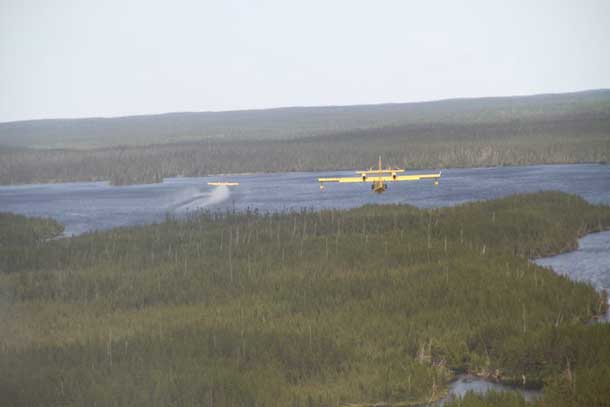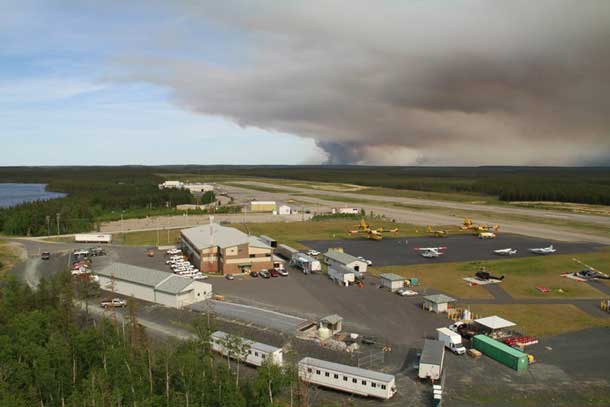
THUNDER BAY – More help is on the way to fight fires across Northwestern Ontario. Earlier today the Ontario Government decided not to call for a State of Emergency in the region over the fire hazard. There are 109 fires burning in Ontario right now. Those fires cover an area of 400,000 ha. This is a massive increase in lands impacted by fire over last year when only 15,000 ha were burnt.
The rain in the region overnight has brought some temporary relief, however to extinquish fires it would take a vastly larger amount of rain. However some of the larger fires are slowing in the rate they were growing. Those fires are still producing a lot of smoke and that is presenting a continued hazard to both fire fighters and communities.
The province of British Columbia will send an additional 74 forest fire personnel to Ontario to assist with a continuing increase in fire activity. That includes one incident management team, 11 initial attack crews and 20 single resources will depart Thursday. This will bring the total number to 533 B.C. personnel working in Ontario. British Columbia is experiencing the slowest fire season start in the last decade, allowing the Wildfire Management Branch to lend over 1,500 personnel to other provinces so far this year.
Costs for a deployment will be covered by the Ontario government under the Mutual Aid Resources Sharing Agreement, which allows sharing of firefighting resources across Canada. Sufficient crews will remain in B.C. should fire activity increase. The Wildfire Management Branch always maintains adequate firefighting capacity to respond to current conditions.
The Canadian Red Cross (Ottawa Branch) has set up a Central Registration & Inquiry Bureau (CRIB) to serve the residents of evacuated communities in northwestern Ontario. Nishnawbe Aski Nation (NAN) Deputy Grand Chief Mike Metatawabin is encouraging all family members of evacuees threatened by the forest fires raging across Northwestern Ontario who are trying to reach relatives to call the Canadian Red Cross Registration and Inquiry Bureau (866) 356-3645 ext.236.
“In light of this situation, many family members are trying to reach loved ones affected by the forest fires threatening NAN communities in Northwestern Ontario,” said Deputy Grand Chief Mike Metatawabin. “They don’t know who or where to call to locate family members who have been displaced to many different towns and cities all across Ontario. People are growing concerned because they don’t know where their family members are or if they are okay.”
As evacuations continue, here is a list of the communities evacuated or partially evacuated:
|
Communities Undergoing Evacuations
|
Evacuated
to date
|
|
Cat Lake First Nation*
|
373
|
|
Sandy Lake First Nation
|
686
|
|
Mishkeegogamang First Nation
|
58
|
|
North Spirit Lake First Nation
|
200
|
|
Keewaywin First Nation*
|
320
|
|
Eambametoong First Nation
|
281
|
|
Kasabonika Lake First Nation
|
9
|
|
Couchiching First Nation*
|
20
|
|
Kingfisher Lake (new)
|
|
|
Wunnumin Lake (new)
|
|
|
Total evacuated
|
1947
|
|
Host Communities
|
Evacuees received
|
|
Greenstone
|
711
|
|
Kapuskasing
|
140
|
|
Sioux Lookout
|
276
|
|
Matachewan First Nation
|
108
|
|
Wawa
|
110
|
|
Thunder Bay
|
275
|
|
Dryden
|
159
|
|
Moosonee
|
TBD
|
|
Marathon
|
TBD
|
|
Kitchener/Arthur
|
TBD
|
|
Ottawa
|
TBD
|
|
Ignace
|
TBD
|
For the latest fire conditions, click on the Fire Map on the top menu.

[ad#Google Adsense 350×250 sidebaradd]






